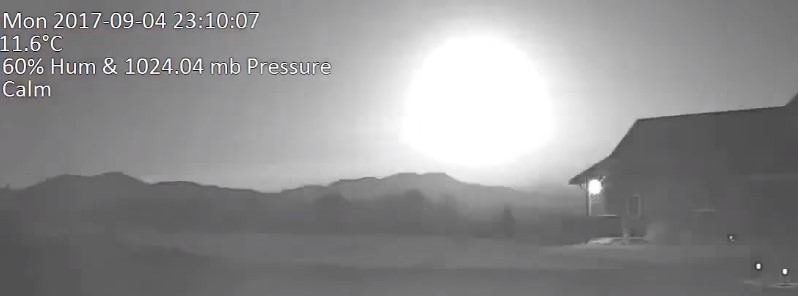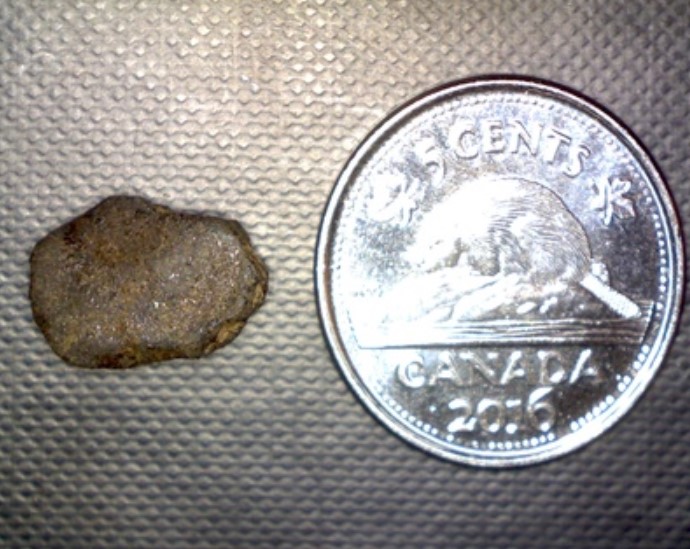Meteorite fragments from fireball that illuminated British Columbia found

Researchers from the University of Calgary and their international colleagues have discovered the meteorite remnants from a large fireball that illuminated British Columbia, Canada at 05:11 UTC on September 5, 2017 (22:11 PDT, September 4). The size of this object was about 1 meter (3.3 feet) and its weight between 1 to 2 tonnes. Experts expect that interested people will be finding meteorites in the forest across the predicted fall zone for years.
The search group was led by Alan Hildebrand, associate professor in the Department of Geoscience, University of Calgary. "We thought that the best way to track the meteorite would be to ask members of the public to send us their videos of the fireball," Hildebrand says. "We had a great response and co-operation from many people, who gave us access to homes and businesses."
"We need to recover more and larger meteorites to learn what we can from this fall. For example, with enough pieces we can tell how big the rock was when it entered the atmosphere," says Hildebrand.
Thousands of meteorites, ranging from the size of a peppercorn up to rocks weighing 5 to 10 kg (11 – 22 pounds), will have fallen, but most will be in the forest that blankets the eastern shore of Kootenay Lake. Hildebrand expects that interested people will be finding meteorites in the forest across the "strewnfield" for years.
The team used the videos to pinpoint the meteorites’ location in the predicted fall zone — what researchers call a strewnfield — a 20-km (12 miles) stretch starting east of Crawford Bay, B.C., to the Kootenay Lake shore north of the village of Riondel.
With the prediction of where meteorites would have fallen, the UCalgary team headed into the search area and found the first meteorite on October 29 on private land in northeastern Crawford Bay.
Fabio Ciceri, a visiting master of science student from the University of Milan, made the first meteorite discovery. "At first I couldn’t believe it — ever since I was a child I got up with my father to see the night sky, and it was like a dream to hold a space rock in my hand," Ciceri said.

Comparison of a remnant beside a nickle. Photo by Alan Hildebrand, Faculty of Science (source)
The researchers also encourage anyone running security or wildlife cameras in the Riondel area to check their cameras (September 4 fireball start time of ~22:11:25 PDT) to see if they captured the light and shadows cast by the fireball. This will help researchers determine the fireball’s end location so that more accurate fall locations can be predicted for the largest pieces.
The team plans to continue searching, but the approaching winter has made finding meteorites more challenging.
Featured image: British Columbia fireball on September 5, 2017 (UTC). Credit: S. Schofield, AMS

Commenting rules and guidelines
We value the thoughts and opinions of our readers and welcome healthy discussions on our website. In order to maintain a respectful and positive community, we ask that all commenters follow these rules.